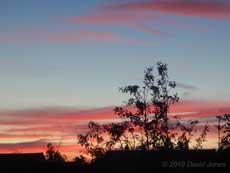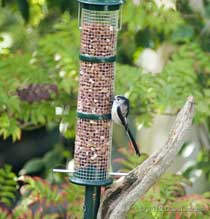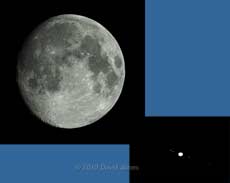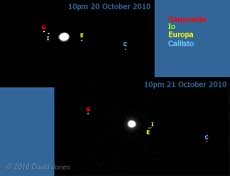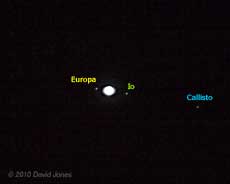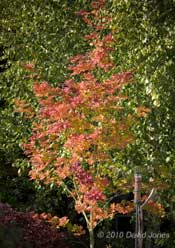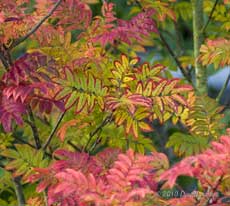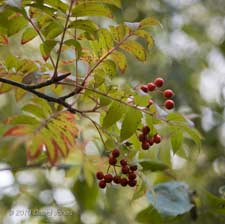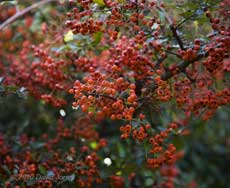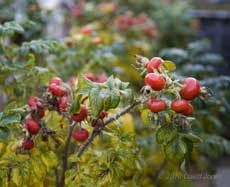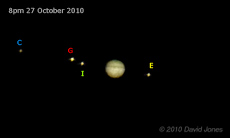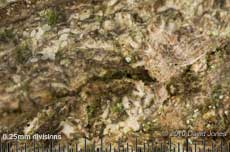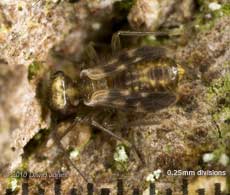Go to the last entry on this page .....Go to previous entry12 October - What can I say - I was beginning to wonder whether or not I was going to continue with the diary since failing to keep going after the previous attempt at a restart. It seems that even the site counter gave up on me! I haven't tried to find out what happened to that, but it does seem to have started counting again now. The trouble is that I don't know what the counter read when it stopped working, so I cannot reset it. This has not been the best of summers, with hardly a photograph taken, with not just the wildlife neglected but more importantly I took only a handful of pictures of our grandchildren. However, despite the lack of diary entries it hasn't been a complete disaster. As usual, our plans included an Autumn trip to Cornwall, and while at one stage even that was in doubt we made it there during September, and had a much better time than we could have hoped for. Before heading west we needed to decide on a replacement for our aging Land Rover Discovery. We bought a 2005 Honda CRV which proved a great success in Cornwall. During the holiday I was able to keep a diary and you can visit it by clicking on the 'Last month' link at the bottom of this page (I have yet to add the large images). On our return, one of the first e-mails I read brought some very sad news. Those of you who have followed my diaries will know that over the last few years I have taken an increasing interest in one particular group of insects that inhabit the garden. That interest has been largely thanks to the expertise and enthusiasm of Bob Saville. Bob continued to encourage me and a growing group of other enthusiasts despite fighting a personal battle with cancer, a battle that he finally lost on 9 September. As I continue to watch out for these fascinating insects I will continue to visit, and hopefully contribute to the National Barkfly Recording Scheme website that Bob set up and which is such a valuable addition to the web. During our holiday I spent a couple of hours searching unsuccessfully for a nationally rare barkfly to photograph for Bob - I'll be trying again during future visits to Cornwall. Over the last year I have been doing all my computing on my laptop after my PC gave up. Yesterday I finally got around to ordering a replacement, and I can't wait to have access again to two large screens for photo processing - hopefully it will help me to improve my productivity!!! And in a case of reverse hand-me-down, son Simon has given me his A3 printer which has much better print resolution than my older model and which should boost the print quality of my photographs (if I get everything else right!).
17 October - Since that last entry things have been on hold again to a great extent - along with the printer my son passed on a bug to me and it's being rather reluctant to give up and move on! Also, I now have the new computer and I'm in the process of setting it up. It seems that a couple of the devices I used with my old machine will need replacing (such is the price of progress!) over the next month or so, and as I write this I'm testing out a trail version of new software that I will need to maintain the website.
This was the western sky just after sunset - not a good one, but nevertheless one of the most colourful so far this Autumn.
20 October - A beautifully sunny day, and I think the coldest so far this Autumn - the temperature outside (in the shade) is just below 7C at noon. I'm gradually catching up with things, and have finally got around to adding all the large images for our Cornish trip (click on the September link below). Yesterday I spent a bit of time clearing the 'deep end' of the big pond before the frogs decide to hibernate. At the moment there are at least six to be seen poking their noses out from under the duckweed. The lack of rain also meant the the water level had become very low, so I directed a hose into the water butt that is linked to the pond and left the water running slowly for a couple of hours. I do it this way rather than using mains water directly into the pond so that the chlorine etc in the mains water is 'diluted' by the rain water in the butt before it enteres the pond. Anyway, once the pond was full again I put the hose away and an hour later we had the heaviest rain shower I've seen since we came home from our holiday! This afternoon I used a ladder and scaffold plank to bridge the deep part of the pond so that I could get to the area next to the fence where the border has been invaded on a grand scale by Houttuynia cordata variegata, a plant with the common names Chameleon Plant or Orange Plant, thanks to the very strong scent of oranges you get when handling it. We cannot establish how it came to the garden, but it obviously likes the shaded, damp soil between the pond and the fence. To get rid of it I would need to dig out its spreading root system, but they seem to go down deep in a place where I cannot dig deep without the danger of damaging other root system. Having cleared a small area I then turned my attention to giving the Willow a 'haircut', especially on the side that overhangs my neighbour's garden. With no rain forecast tonight the bridge has been left in place so that I can get more work done tomorrow. I have still to get back into the habit of taking a camera out into the garden, although I do now have my big lens ready for action. Bird activity in the garden has been largely restricted to smaller species. While Collared Doves continue to visit, I have restricted their feeding options by removing the tray from the base of the sparrow feeder, and dangling a few weighed strings from the roof that covers the bird table. These changes mean that the Doves have to feed on the ground. The Wood Pigeons seem to have gone elsewhere for the moment. Amngst the small birds, the House Sparrows continue to be the main species present, with counts which sometimes exceed 40, but it has been good to see that each day there are often six or more Blue Tits here, a pair of Great Tits, and a single Coal Tit, as well as two Robins.
Yesterday we were visited by the first Long-tailed Tits (a group of four) that I've seen here this Autumn. Here is one of them on the tall peanut feeder at the far end of the garden, next to the Rowan tree, and photographed from our bedroom window. The feeder is a new one, replacing a larger, home-made one that had been in place for many years and was difficult to clean.
So far this Autumn, two usually familiar species have been noticeable by their absence from the garden. There are no Dunnocks to be seen, and I have neither seen or heard any Blackbirds, which really is unusual. While I haven't seen any Starlings in the garden, I have seen small flocks flying about late in an afternoon before flying off to roost, and I have seen one going in and out of one of the Swift boxes that I can see on the house across the road (using the box they nested in last Spring.
Tonight the sky was clear so I headed outside at 10pm to try and at least pinpoint where in the sky I should look to find the comet Hartley. To find it I would need to look to the north-east which meant looking through the effects of street lighting, a nearly full moon and to a certain extent through the roof of my neighbour's house! While I was able to see a few of the stars in its vicinity there was no chance of seeing the comet.
In this composite image both the moon and Jupiter are shown at the same scale.
21 October - Another sunny day. although with some cloud. I spent an hour or so perched on top of my tall step ladder, pruning the top of the Hawthorn tree. On another day I'll have to set up the ladder on the opposite side of the tree to complete the task, although I'll probably take tomorow off!
In order distance from the planet, the closest is Io, followed by Europa, Ganymeade (the largest moon in the Solar System - bigger than the planet Mercury), and finally Callisto. These images show how the relative positions of the moons have changed over the last 24 hours.
To name the moons I have used a very nice Javascript utility on the Sky and Telescope website. This allows you to set the date and time and then shows you the relative positions of the moons. By repeatedly clicking on the +10 or -10 Min button it helped make sense of how they had moved over the 24 hour period.
23 October - After spending too long atop a stepladder two days ago it been a case of doing virtually nothing since, although it was cloudy skies rather than the weariness that prevented me from checking on Jupiter last night.
According to the utility mentioned above, Ganymeade had disappeared behind the left side of Jupiter just a short time before the picture was taken and will reappear on the right side soon after midnight - I'll be fast asleep when that happens.... While the three images suggest that Callisto has moved very little, running the utility shows that over the last few days it has actually been moving away from us, and over the next seven days it will move to the opposite (left) extreme of its orbit. Weather permitting I may record this movement for a diary entry next weekend.
until the sun made its first appearance and lit up our Rowan in all its (still immature) glory! This is its best display of Autumn colour so far, especially when see against the now rather tired looking green of the Birch tree.
The addition of a polarising filter only helps to emphasise the colours of the Rowan - alas, a display that will only last a short time.
Once the leaves fall the tree will look very bare as there are only a couple of glumps of berries maturing on it this Autumn. It will be interesting to see how long these last before they are eaten.
At the other end of the garden the Pyrocantha displays its best ever crop of berries, a feast for the Blackbirds this winter, speaking of which, this afternoon I heard one in the garden for the first time since our Cornish trip, and also spotted a Dunnock (in amongst the Pyrocantha branches). I've already seen a Wood Pigeon feeding at these berries!
At the front of the house there are also what I hope are further tempting feasts for birds during the Winter. These are the very large hips of the Rosa rugosa plants along our front fence. After a very good year for flowering they have produced a decent harvest of hips, some of which are the size of small tomatoes.
As the week goes by, and weather permitting, I'm heading outside after dark to take more pictures of Jupiter and its moons. A family friend is using the series of pictures to help in his science lessons during a topic on Astronomy, and I'm aiming to show the movement of the moons, particularly that of Callisto as it travels half way around its orbit in 8 days, 8 hours. If I can, I will continue to photograph it until the orbit is completed. One problem with my camera set-up is that in order to record the moons I need use a comparatively long shutter speed, but this means that Jupiter then appears as a white spot. This evening I took my set-up to its most extreme magnification (Nikon 300mm f/2.8 lens, Nikon 2x coverter, Canon 2x converter, Canon 1.4x converter !) and then took two photographs immediately after one and other.
This image shows the result of combining the two pictures - absolutely terrible in Astromony terms, but at least it now shows the presence of one of the dark bands present in the atmosphere of Jupiter.
Stored in our caravan is a small telescope that has been waiting since last Winter for a bit of TLC. Perhaps it is time to bring it indoors and spend some time sorting it out!
29 October - Over the last few days the winds have been coming form the south-west, and the last two days have been largely cloudy with some heavy rain. Although I did manage to grab a couple of Jupiter pictures last night through breaks in the cloud, tonight it is completely overcast and damp. Those winds have also meant that it has been quite mild so that our log fire has not seen use in the daytime over these last two days. I am still finding it difficult to 'get going' again in the garden, but when I picked up a log today, a barkfly scurrying agross the bark caught my eye. Rather than photograph that one I decided instead to take a look at the oak log that featured in the long study I carried out a year ago (see link on home page). That study involved me monitoring the behaviour of a nationally rare species, Pseudopsocus rostocki over a period of several weeks. At the end of that time the barkfly walked out of sight of the camera and was not seen again. Since the end of the study the log has been kept in a shaded corner of the veranda, where it can get a bit wet whenever it rains. This has meant that a year later some of the lichen, algae and moss are still alive. I've checked it for that species of barkfly without success a number of times since then, and today was no exception. However, this time I found what I assume is a pair of Epicaecilius pilipennis. This is an un-common species that is established in our garden, and another one of the species that Bob Saville idenified for me.
By the time I organised my camera, tripod etc one of the barkflies had gone elsewhere, and the other had retreated a short distance, but still close to the eggs as you can see in the large version of this picture.
Here is a closer view of that insect, a very hairy species. I suspect that the disappearance of one of the barkflies may have been a reaction to that part of the log being exposed to the much brighter conditions on the veranda table. Next time I must remember to provide shade while I set up camera equipment!
This evening I carried out a task that I've been meaning to do for at least the last couple of years. I photographed a series of magnification scales (x1, x1.1, x1.2, x1.3, .......x5) that I can use to speed up the process of adding scales to photographs taken with my MP-E 65mm macro lens, as I've done above. During the weekend I'll be producing another set for the higher magnifications using a much finer microscope graticule, and which give smaller subdivisions.
Click on images to see larger version |
|
